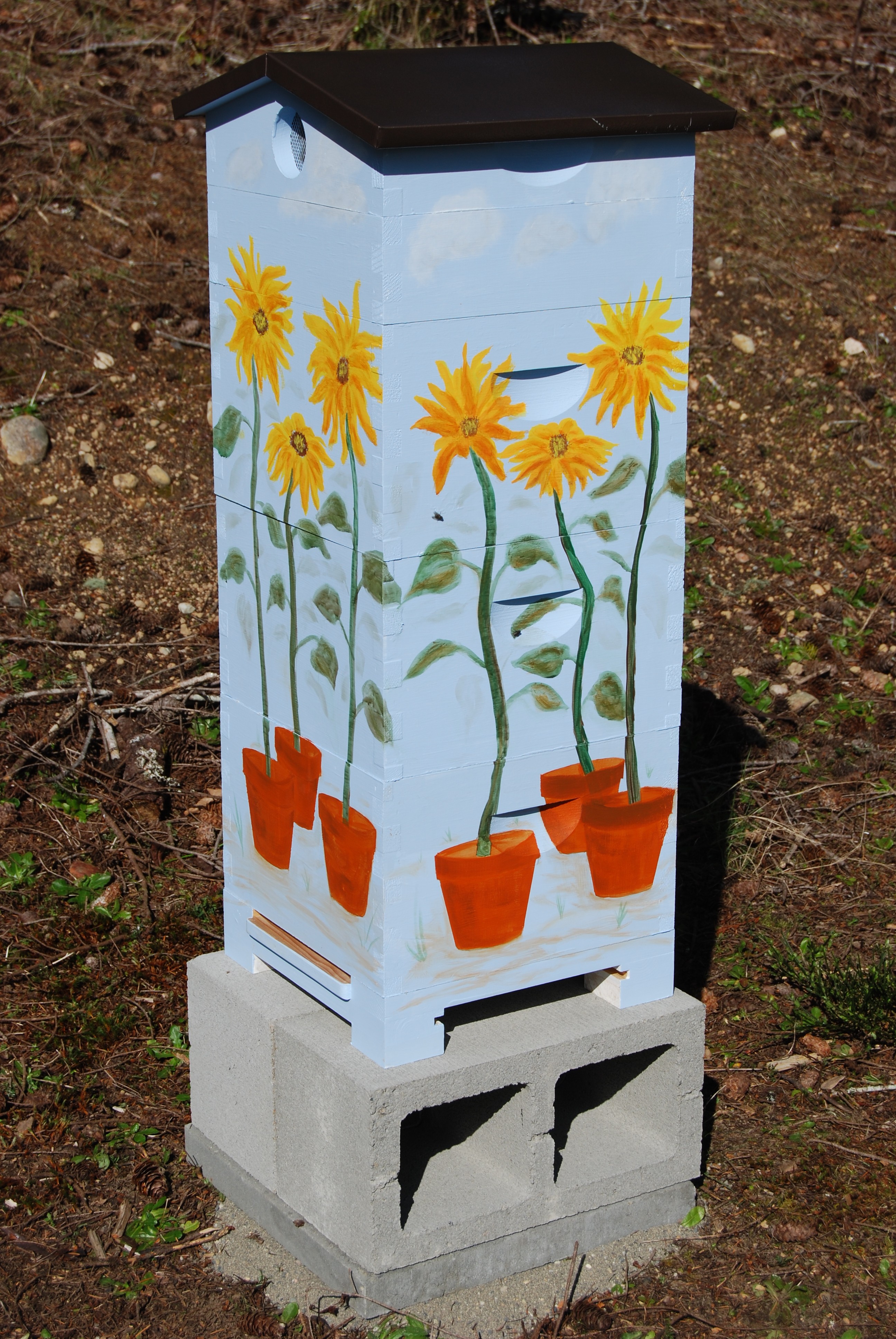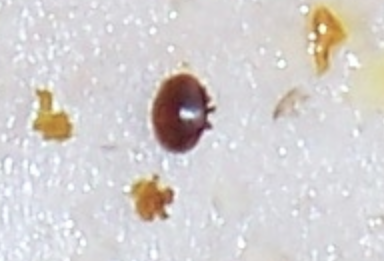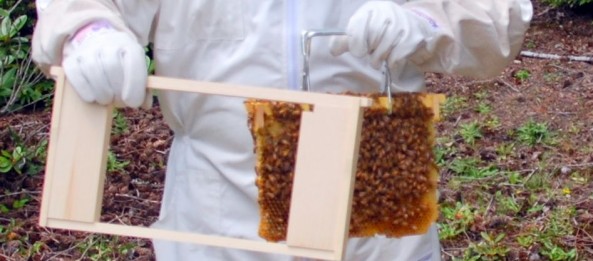An excellent report by Dan Rather. More questions than answers but this story at least heightens the awareness of the impending doom of the honey bee unless we can get a handle on the use of chemicals and pesticides on our crops.

An excellent report by Dan Rather. More questions than answers but this story at least heightens the awareness of the impending doom of the honey bee unless we can get a handle on the use of chemicals and pesticides on our crops.

We are in the middle of winter and have been in a cold spell. Dry days and clear nights have lead to temperatures in the teens and 20’s. I’ve used a flash light to look in the windows of the two warre hives to check on the bees. Green roof hive is looking good but I’m afraid flowers hive might be dead. I can see the bees all clustered together but no movement at all. Also seeing quite a bit of furry mold on the comb. The nuc is still a mystery as I don’t want to open it up to check….I hate this part of beekeeping.
At our bee club meeting last night we had the discussion about overwintering our bees. One lady suggested that perhaps it would be a good idea to move the hives into a warmer, protected area like a carport or shed. While this sounds good it was pointed out that what is really better for the bees in general is to let the stronger ones survive the winter then try to graft some queens from this stock. In this way we are promoting bees that are stronger and that can deal with winter in the Northwest.
Three things affect our bees in this area
If each of these are kept in check the bees should make it.
My goals for this year:
Have at least 2 of my 3 hives survive.
If my nuc survives move it into an 8 frame western
Capture one swarm
Graft a queen from my healthiest hive
End the season with 3 or 4 full hives and 1 or 2 nucs
I do have quite a bit of work to do on equipment. I need to build the nuc boxes I bought from Brushy Mountain when they had their sale and I also need to build a lot of frames so that I’m ready to stock the western, and I hope to build a jig that will help me to glue and nail straight frames……Can’t wait for the next day that is in the 40’s so I can take a closer look at the hives….Til then all I can do is worry.
It is December in Seabeck Washington. While our winters are very moderate compared to much of the country we do get snow from time to time. We just had two days of snow and our neck of the woods had over 10 inches. The days now are upper 30s and might get into the mid 40s this next week, the nights are in the lower 30s….in any case the snow will not last long.
A friend asked me today about the bees. What do they do when it snows? Do they hibernate?
This is the 6 million dollar discussion. How do you get the bees through the winter. This is the crux of what so many beekeepers struggle with each year. It is not unusual to have a 30 to 50% loss each year.
The bees do not hibernate. I consider hibernation like a sleep state. Bees remain active throughout the winter. They generate heat with the same muscles they use to fly. They flex or pump their mucsels in such a way that they maintain a core temperature of about 89 to 97 degrees F.
During warm weather bees come and go from the hive. Collecting and returning with pollen, nectar water or sap. They also leave for cleansing flights as they do not defecate in their hive.
At about 64 degrees F the bees begin to cluster, that is collect closely together to preserve heat. There are two basic parts of the cluster; the core which uses its muscles to create the heat and the outer layer that acts as insulation for the core. As temperatures drop the cluster tightens. The bees rotate from the inner part of the cluster to the outer, taking turns generating the heat. The energy they use is fueled by the honey they eat or the sugar the beekeeper has given them if they do not have sufficient honey stored.
The queen slows down egg laying and stops all together for a short time all to preserve energy and make it through the winter. Some think that the winter solstice is what keys the queen to begin to slowly build up the brood again.
Beekeepers in areas with harsher winters may actually wrap their hives to better insulate them, making it easier on the bees. The typical advice when it snows is to leave the snow on the top of the hives, it acts as an insulator.
My goal now is to just check them on warmer days and ensure they have plenty of sugar….and hope I don’t suffer the 30 to 50% loss that others have.
Thank you Lee for this great question.
Resource for information in this post came from here: http://www.capabees.com/main/files/pdf/winteringpdf.pdf
Yakima beekeeper finds that bees winter better in cold storage news.yahoo.com/video/seattlek… via @yahoonews
— Frank (@BeekFreak) November 30, 2012
Many of you may have heard me commenting that though I love Brushy Mountain Bee equipment I don’t like the expense of having it shipped. Well now is the time to buy. Free shipping on Black Friday. I don’t get any benefit from passing this on, I just think it is important to tout good quality and I think their western nucs are the best on the market:
Here we are, late fall staring down the barrel of winter. The rains are driving and the winds are blowing. Our hives are all tucked in, tied down and sugared up. Other than doing a quick visual inspection on the next warmish sunny day and maybe replenish the sugar, we have done all we can do to get the bees through this winter.
We spent the early spring setting up the hives and feeding our bees, the late spring and summer building up our hives. We spent our weekends counting sticky boards, adding supers, estimating brood, cutting out drone comb and watching for signs of a swarm. We’ve tried to systemize our inspections, take copious notes and all the while staying observant. On the lookout for robbing, pests, varmints and disease. All our efforts for the bees. A singular focus to help them stay healthy and grow strong.
Now it is our season. The time for us to feed our brains with new information for the next bee season. Time to read the books we heard about but haven’t had time to open. Time for chores, record review and plans for the new season. Time to renew our subscriptions to American Bee Journal or Bee Culture magazines. This is a great opportunity to fix any of your boxes that are in need of repair and build your list of tools and equipment you will need for next year.
I know the internet is working overtime to eliminate everything printed…but there is nothing better than snuggling up on a cold winter day, a hot fire, drink of choice and a nice stack of bee magazines, product catalogs and bee books.
Here is to a nice long winter….the season of the beekeeper.
Quick Guide to Bee Equipment providers:
Driving of the drones, the movie
Each year the drone bees are driven from the beehive in preparation of winter. Since the males serve no purpose to the hive other than mating services, as winter approaches they are quickly identified as consumers and are driven away to preserve the food set aside for winter.
Some specifics of a drone bee:
The drones are male
They are larger than the female
The drone typically has a dark or black abdomen
Only about 2 to 4% of the total hive population is male
The drones have large eyes
The main function of a drone bee is to mate with a queen bee. Since mating happens “on the wing” the large eyes allow a better chance for the male to spot the queen in the air so that he might mate with her. This is his only function. The drone bee does nothing in the hive, no house keeping, rearing of the young or foraging. In fact the male does not even have a stinger. A honeybee hive is a female dominated society.
What you will see in the video:
Bees coming and going
Some of the bees will be carrying pollen in the pollen baskets on their rear legs.
The largest bees are the male or drone bees.
You will see the females chasing drones out of the hive or over the edge of the landing platform.
You will see females riding the drones, though they typically do not sting the drones they are known to damage the drones wings and inflict damage on them that will disable them.
It is not uncommon to see females drag undeveloped male larvae out of the nest as fall approaches.
The driven drone will usually only last a few days outside of the hive. The cooler temperatures, predatory birds and other insects will typically aid in the final chapter of a drones life. It is not until next spring that the queen will once again begin laying male eggs to begin the cycle anew.
Watch carefully as the large male bees are escorted, driven, herded and cajoled out of the hive by the females.

Today I checked Flower Hive for varroa destructor mites. There are several ways to do this, today I chose the least invasive way. My two warre hives have a slide board that I can slide in under the bottom screen. I taped a piece of wax paper onto the board and wiped some olive oil on it with a paper towel. I slid it into the bottom of the hive and left it there for 24 hours.
When I did this on my green roof hive a few weeks ago I didn’t find anything. This time I saw quite a few. I counted about 30 varroa
mites. Most hives will have some level of varroa mite infestation but when the drop count gets to 15 to 20 it is time to treat. There are quite a few ways to treat for varroa mites. I’ll not delve into those here except to say that they can become pretty chemically invasive.
We are trying to go as natural or as organic as possible. Now I’ll be the first to say that it is not natural to have powdered sugar fall from the sky onto an open hive but this is the method I chose. Dusting the hive
with powdered sugar 1) clogs the suction cupped feet of the mites causing them to fall through the screened bottom board and 2) increases the grooming behavior of the bees so that they clean the sugar and the mites off of each other. If I had a solid bottom board hive the mites would be more likely to fall to the bottom, shake off the sugar and climb back up on the next passing bee. The screened bottom board adds ventilation to the hive and also creates a way for the mites to fall out of the hive.
I’ll check in a week or so with another olive oil slicked board to see how well this treatment worked.

Though there are many positive aspects to Abbé Émile Warré (1867-1951) beehive design, one of the drawbacks is the incompatibility between it and other hive systems. As I’m learning more and more about starting splits, queen rearing and using nucs in the classes offered by West Sound Beekeepers Association I’m seeing how much of a hassle it is to work between Warre and Langstroth hives.
In this particular case I wanted to start a split using several frames of brood and pollen and several frames of honey. Typically you would take these from one or more strong hives and just move the frames into a nuc, however the Warre bars are quite a bit shorter than the Langstroth nuc…so what to do….what to do?
One option is to build an adaptor. This will allow you to slide the smaller Warre bar with its comb into a frame that will then fit into a Langstroth nuc. Fortunately for me I have a friend/fellow beekeeper who is a master wood worker. Darren, House of Bees.com, built a slick frame that allows just that. You can see to the side what it looks like.
Another option is one I devised on the fly before Darren proposed his Warre adapter. Simply take the top bar of aLangstroth frame and
lay it along the top of the Warre bar. Run two zip ties through the comb and around cinching the two top bars together. Then simply hang the combination into your nuc or other Langstroth hive. As you can see in the photo the bees are more than happy to fill in the space.
The big difference between the two approaches is that Darrens adaptor can easily be undone if you wanted to move the Warre bar back into a Warre box. My zip tie method would be a little messier.